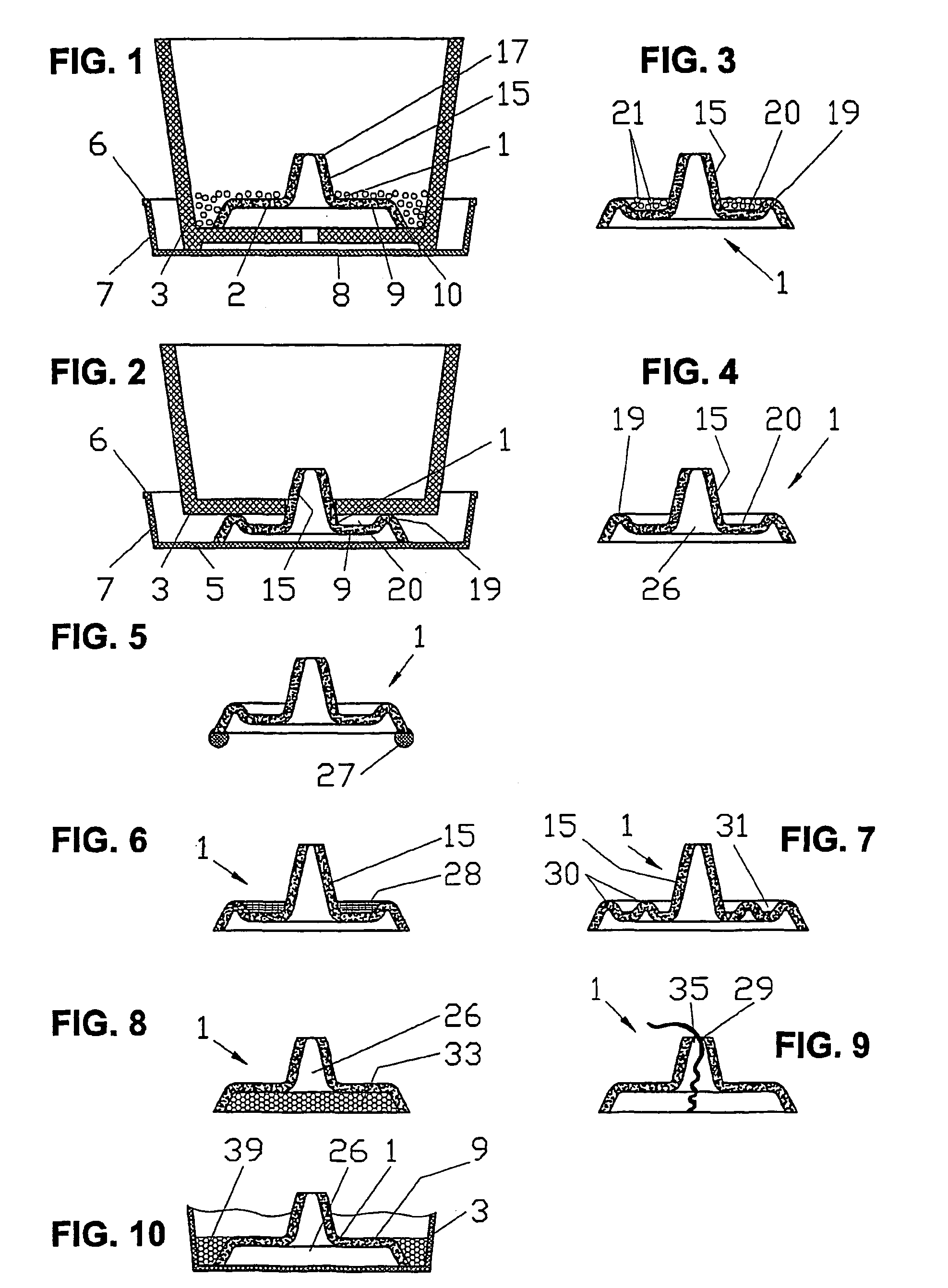Molded body for improving cultivation conditions for plants
- Summary
- Abstract
- Description
- Claims
- Application Information
AI Technical Summary
Benefits of technology
Problems solved by technology
Method used
Image
Examples
embodiment 40
[0068]FIG. 11 shows an elongated embodiment 40 that is particularly suitable for insertion in rectangular planting boxes 42.
[0069]Instead of a separate body, moulded body 40 may also be formed as an integral component of box 42, i.e. the moulded body simultaneously constitutes the bottom of box 42.
[0070]FIG. 12 shows a ninth embodiment 44 with a rectangular base 45 on which two cones 47 are formed. This embodiment is intended particularly for applications in bonsai planting containers and reduces the high burden of cultivation. At the same time, it provides increased safety with regard to insufficient or excessive watering, to which especially bonsai plants are very sensitive.
tenth embodiment
[0071]FIG. 13 shows a moulded body46 that is designed for being thrust into the plant substrate from above. It is essentially composed of a cone 48 with a collar 49. Cone 48 is almost or perfectly water-impermeable in the area 53 from apex 50 up to about the center in order to form a water reservoir. As it is e.g. made of clay, a water-impermeable insert 52, e.g. of plastics material, is inserted in the lower portion 53. A watertight or water-inhibiting coating is also possible. The sealing layer may also cover the entire internal and / or external surface of moulded body 46. Preferably, it extends over a minimal height of a quarter of the height of moulded body 46. If it is higher than e.g. three quarters of the projection, resp. if it extends over the entire height of the moulded body, the upper area must be provided with apertures 54 allowing the water exchange. Basically, apertures 54 allow the direct distribution of supplied water that is not collected in the reservoir in lower p...
eleventh embodiment
[0075]Thus, as illustrated in FIG. 14 by an eleventh embodiment, the water-impermeable lower portion 53 constitutes a reservoir, while in the upper portion 55, the water may pass through apertures 54 (when the moulded body is quite full) and / or through the water-permeable material of moulded body 46 according to arrows 56. When the water level falls below the limit between the water-permeable and the water-impermeable portions, the water supply is ensured by capillary forces. For this purpose, moulded body 46 is filled with porous, capillary granules 57.
[0076]The water consumption is thereby reduced, and the water supply is maintained over a longer period. To sustain the water supply in this phase, it is possible to provide capillary systems (wick, sponge) extending e.g. from apex 50 through apertures 54.
[0077]This eleventh embodiment comprises a heightened rim 58 to prevent the inflow of surrounding plant substrate during watering. In addition, on the inside, a funnel-moulded sieve...
PUM
 Login to View More
Login to View More Abstract
Description
Claims
Application Information
 Login to View More
Login to View More - R&D
- Intellectual Property
- Life Sciences
- Materials
- Tech Scout
- Unparalleled Data Quality
- Higher Quality Content
- 60% Fewer Hallucinations
Browse by: Latest US Patents, China's latest patents, Technical Efficacy Thesaurus, Application Domain, Technology Topic, Popular Technical Reports.
© 2025 PatSnap. All rights reserved.Legal|Privacy policy|Modern Slavery Act Transparency Statement|Sitemap|About US| Contact US: help@patsnap.com



